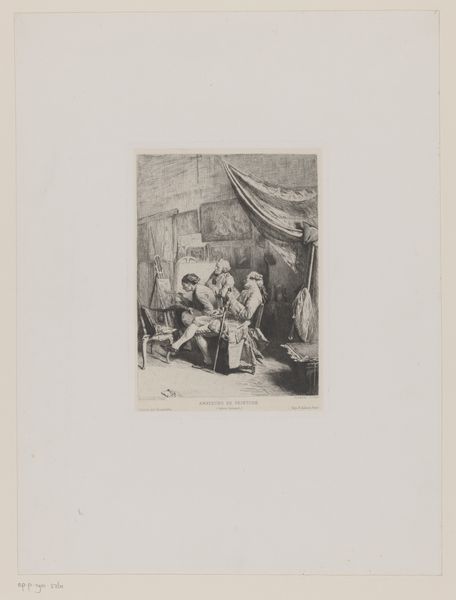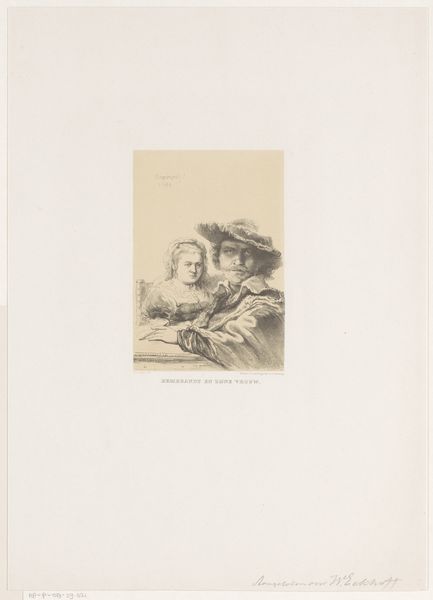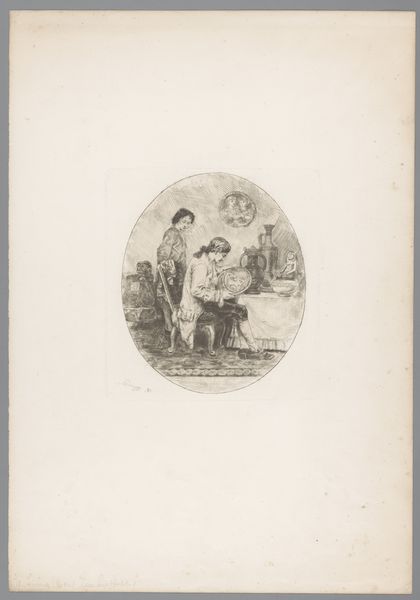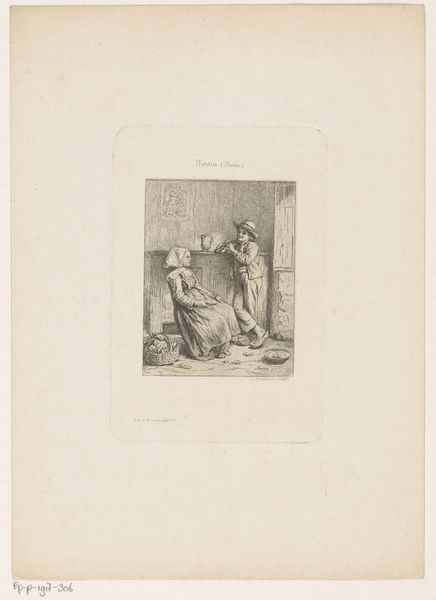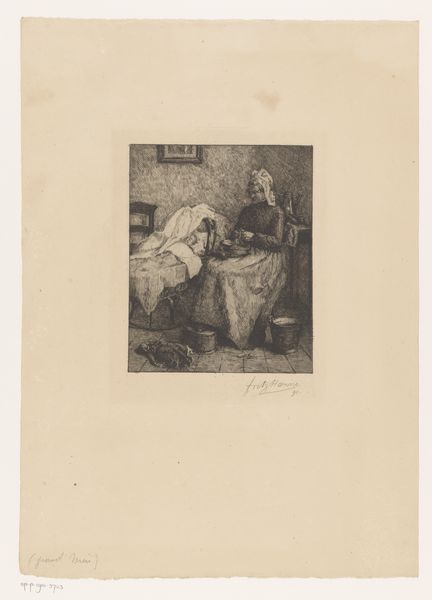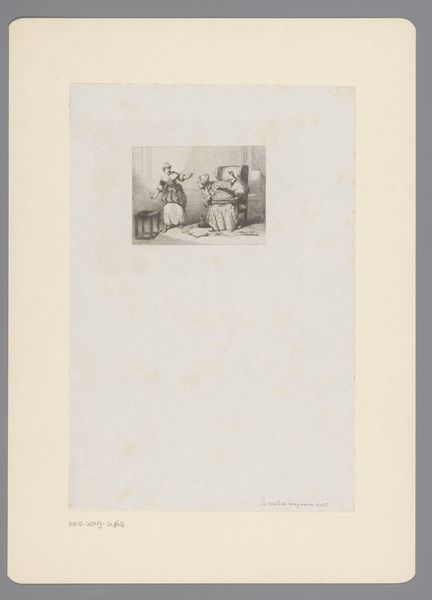
drawing, print, etching
#
portrait
#
drawing
# print
#
etching
#
men
#
genre-painting
Dimensions: Sheet: 11 9/16 × 8 1/2 in. (29.4 × 21.6 cm) Plate: 5 9/16 × 3 9/16 in. (14.2 × 9.1 cm)
Copyright: Public Domain
Editor: So, this is Marcellin Desboutin’s etching, "L'Assommoir, ou scène de brasserie," made in 1886. There's a man and a woman, likely in a bar. The woman's arms are crossed, she almost seems... annoyed? What do you see in this piece? Curator: It's fascinating how Desboutin captures the power dynamics, isn't it? Considering the title references Zola's novel, L'Assommoir, we can read this scene through a lens of class struggle and gender inequality. Does her posture strike you as defiance or resignation? Editor: Maybe both? It's hard to tell. I hadn't considered the Zola connection though! How does that change things? Curator: Well, Zola's novel exposed the brutal realities of working-class life in Paris. Thinking of the artwork in that context, what seems like annoyance can be a reflection of the social and economic precarity experienced by women in that era. The man, leaning casually, may represent the patriarchal structures that contribute to their oppression. Do you agree? Editor: I do, especially with that reading of the source material! But I still wonder, do we risk reducing the figures to mere symbols of a social problem? Is there still room for individual expression in Desboutin’s work? Curator: That's an important question! Yes, there's always that tension. While we must analyze the social context, we shouldn't erase the individual experiences represented. Perhaps the etching allows us to simultaneously recognize both the structural forces at play *and* the nuances of human interaction within them. Editor: That makes sense. I'll definitely consider the socio-historical background when looking at art from now on. Thanks! Curator: Likewise, it's refreshing to consider the personal story behind what could otherwise be strictly a portrait of injustice.
Comments
No comments
Be the first to comment and join the conversation on the ultimate creative platform.



